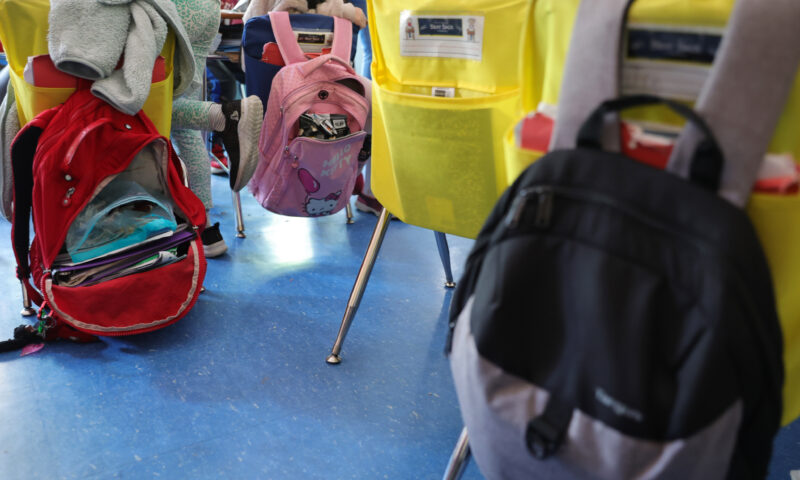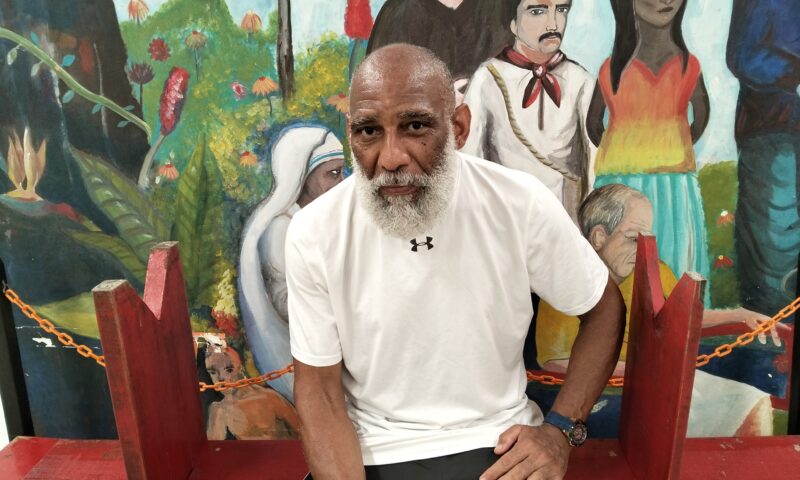2020 Elections
L.A.’s School Board Races Turn Expensive and Ugly
And why California could see more races like this.

A pricey proxy war between rival factions — charter school advocates and L.A.’s main teachers union — is playing out in two runoff races that could determine control of the Los Angeles Unified School District board. On one side is United Teachers Los Angeles (UTLA). On the other are California Charter Schools Association (CCSA) and charter allies Alice and Jim Walton; philanthropist and major charter backer Eli Broad; and Netflix CEO Reed Hastings. Because the two races could tip the balance of power on the board toward teachers unions and traditional schools, or to charter schools, both sides are spending an unprecedented amount of money on their candidates – and, in the case of the charter-friendly candidates, to attack their opponents.
Co-published by Patch
In LAUSD Board District 3, incumbent Scott Schmerelson, a former LAUSD teacher, counselor and principal, is fighting to keep the school board seat he won in 2015. He’s fending off a challenge from Marilyn Koziatek, the head of the tutoring and enrichment department at Granada Hills Charter High School. In District 7, two members are vying for the seat of Richard Vladovic, who is leaving the board due to term limits: Tanya Ortiz Franklin, an administrator at the Partnership for L.A. Schools, an organization that operates 19 schools for LAUSD, and Patricia Castellanos, a workforce development deputy for County Supervisor Sheila Kuehl and a former appointee to the L.A. Board of Harbor Commissioners. Right now the seven member LAUSD board is split three to three, and whoever takes Vladovic’s seat, a frequent swing vote, will tip the balance. Toppling Schmerelson would also tilt the board toward charter schools. Pro-charter outside money is with Koziatek and Franklin. (Disclosure: Capital & Main receives financial support from education unions, though not from UTLA.)
Both sides have been spending increasingly larger amounts to influence the outcomes of LAUSD races, and this year’s race has now eclipsed 2017 as the most expensive in L.A. history. Most of the ads are created with money from independent expenditure groups, called IEs or just outside spenders. These groups face no fundraising limits, and the candidates, whose campaign money is dwarfed by the influx of IE cash, aren’t allowed to influence the IE ads or approve their content. Legally they can’t coordinate with IE groups at all.
In 2020, IEs have spent more than $13 million on just these two board races. That’s $10 million more than IE money spent on all 2020 Los Angeles City Council races combined. And charter school advocates have enjoyed a lopsided financial advantage. Pro-charter forces have already spent far more than they did in 2017. The total spent on negative ads by pro-charter IEs on all LA school board races this year tops $5 million, about ten times more than money spent by UTLA and allies. And the L.A. City Ethics Commission site shows that a new mailer has gone out nearly every day in October.
In District 7, pro-Franklin IEs have spent roughly $2.8 million for their candidate and $1.7 million against Castellanos, including flyers linking Castellanos to Schmerelson and his investment in companies that “sell candy-flavored vape products to children.” These figures are a moving target, however: Each week of the campaign has seen a large dump of cash.
* * *
Some of the nastiest and most misleading IE-backed ads have opposed Schmerelson. Flyers have claimed that the candidate was exposing children to deadly vaping because he owned stock in Altria, the owner of vaping product manufacturer JUUL. It is accurate to say the candidate owned stock in Altria, but he said he wasn’t aware that his stockbroker bought those stocks, and he has since sold both the JUUL-linked stock and ordered his broker to inform him of any future stock purchases.
“We don’t have the money to respond. It is a smear campaign that these forces do. It is their M.O.,” says Steve Barkin, a consultant for the Castellanos campaign.
Schmerelson supporters are decrying ads saying he “tripled his pay” and is a “double dipper, taking a generous salary and a fat pension” but fail to mention that all board members got the same pay raise: In 2017, a city-run panel of appointed commissioners, which sets salary levels for LAUSD board members, raised the annual base salary for full-time board members from $45,000 to $125,000. One ad suggests Schmerelson was behind the 2014 LAUSD iPad scandal, which happened before he was on the board, and blames him for paying damages to students who were victims of sexual assault (when no ads blame other board members for that).
According to Jenna Schwartz, a volunteer for Schmerelson, the ads against her candidate are “pure lies.” “They say (Schmerelson) didn’t attend board meetings. But the meetings were cancelled because of COVID. They said he donated $1,000 to the GOP, but the campaign bought a Republican slate in an attempt to reach all constituents. This is not uncommon. It is not a donation or endorsement.” That ad even suggested that Donald Trump endorsed Schmerelson — he did not — without pointing out that Trump’s education secretary, Betsy DeVos, has a strong pro-charter agenda.
According to Michael Trujillo, a consultant for both charter-backed candidates, IE ads for the pro-charter candidates were created by Shallman Communications and funded by CCSA Advocates, the charter association’s political arm. Neither Shallman nor CCSA responded to requests for comment.
In the runup to the primary race in March, the Koziatek campaign came under fire for cartoonish anti-Schmerelson flyers depicting him with a gold dollar-sign chain and holding a fistful of cash, an ad that was eventually discontinued after being denounced as anti-Semitic. The candidate disavowed the ads when confronted by constituents, but she didn’t fire the ad creators – she couldn’t, because they are not part of her campaign. When confronted about them in February, Koziatek did say that the anti-Schmerelson ads were “crude and inappropriate.” But because campaigns can’t be seen to coordinate with IE’s, candidates can go only so far in denouncing their ads, according to Trujillo.
“If (Koziatek) had made a statement that she didn’t want the IE to do something, that would look like coordination, and that is not legal,” Trujillo said. “Public declarations are tricky because the candidate can’t control the IE.”
Steve Barkin, a consultant for the Castellanos campaign, said voters in District 7 are getting sick of the mailers and the negativity. “We don’t have the money to respond. It is a smear campaign that these forces do. It is their M.O.”
Trujillo said he and his candidates are frustrated by the negativity of the IE ads. “I would love for everyone to talk about our candidates’ visions. Both Marilyn and Tanya are uneasy about the negativity. It’s not who they are.”
Expensive could become the norm in California school board races
The amount of money flowing into these two races underscores the fact that Los Angeles Unified has nearly 300 charter schools, more than any other district in the United States, and that LAUSD ranks as the second largest school district in the U.S.
California has seen school board races set new records for spending in recent years, and could see more record-setting races in the future. Ironically that is due to a law, Assembly Bill 1505, that made it harder to greenlight a new charter school. According to Julian Vasquez Heilig, dean of the College of Education at the University of Kentucky and former professor at California State University Sacramento, AB 1505, which took effect in July, gives school districts more discretion to deny new charter school applications. That means charter school backers will spend more to control the makeup of those boards.
“The first conversation on charter oversight now happens at the district level,” Heilig said. “If (pro-charter forces) control the school board then the school board has a Trojan horse in the charter school candidate. They can approve more charter schools in the district.”
In addition, with negative reports about charter schools becoming more common, charter school forces are more desperate for an advantage in getting new schools greenlit, Heilig says.
Both sides are unsure about whether greater turnout will help their side or not. Usually, LAUSD school board races are held in odd-numbered years and receive anemic turnout. This year the turnout will certainly be much higher. And the local races in California are on the first page of the ballot. On the other hand, door-knocking is verboten during the pandemic – one reason IEs may be relying on expensive mailers – and voters are likely to be more focused on the presidential race.
While the race may represent a proxy war between charters and traditional schools nationally, there are real issues at stake if the balance of power is tipped on the board. Sources tell Capital & Main that teachers’ gains from 2019 could be on the chopping block. Heilig said there would be more co-location of charter and traditional schools if the board majority is pro-charter. District 3 parent and blogger Carl Petersen said he doesn’t think that a larger percentage of charter schools would be approved if the board tilts toward charter forces because “barely any are rejected” now.
“The bigger problem is that there will be even less oversight of schools that are already operating,” Peterson said.
Trujillo said UTLA gains might not be on the table if the current balance is tipped. “I do think the board will care more about the student experience as opposed to the teacher contract–which I would argue is a good thing.”

-

 The SlickNovember 14, 2025
The SlickNovember 14, 2025Can an Imperiled Frog Stop Oil Drilling Near Denver Suburbs? Residents Hope So.
-

 Latest NewsNovember 19, 2025
Latest NewsNovember 19, 2025How Employers and Labor Groups Are Trying to Protect Workers From ICE
-

 Column - State of InequalityNovember 13, 2025
Column - State of InequalityNovember 13, 2025Barring a Sharp Shift, Health Insurance Costs Will Skyrocket
-

 Latest NewsNovember 18, 2025
Latest NewsNovember 18, 2025Future of Special Education at Risk, Teachers Say, as Trump Moves to Cut Staff and Programs
-

 The SlickNovember 18, 2025
The SlickNovember 18, 2025After Years of Sparring, Gov. Shapiro Abandons Pennsylvania’s Landmark Climate Initiative
-

 Latest NewsNovember 17, 2025
Latest NewsNovember 17, 2025In South L.A., Black and Latino Neighbors Unite Against ICE as Systems Fail
-

 Column - State of InequalityNovember 21, 2025
Column - State of InequalityNovember 21, 2025Seven Years Into Gov. Newsom’s Tenure, California’s Housing Crisis Remains Unsolved
-

 StrandedNovember 25, 2025
StrandedNovember 25, 2025‘I’m Lost in This Country’: Non-Mexicans Living Undocumented After Deportation to Mexico

